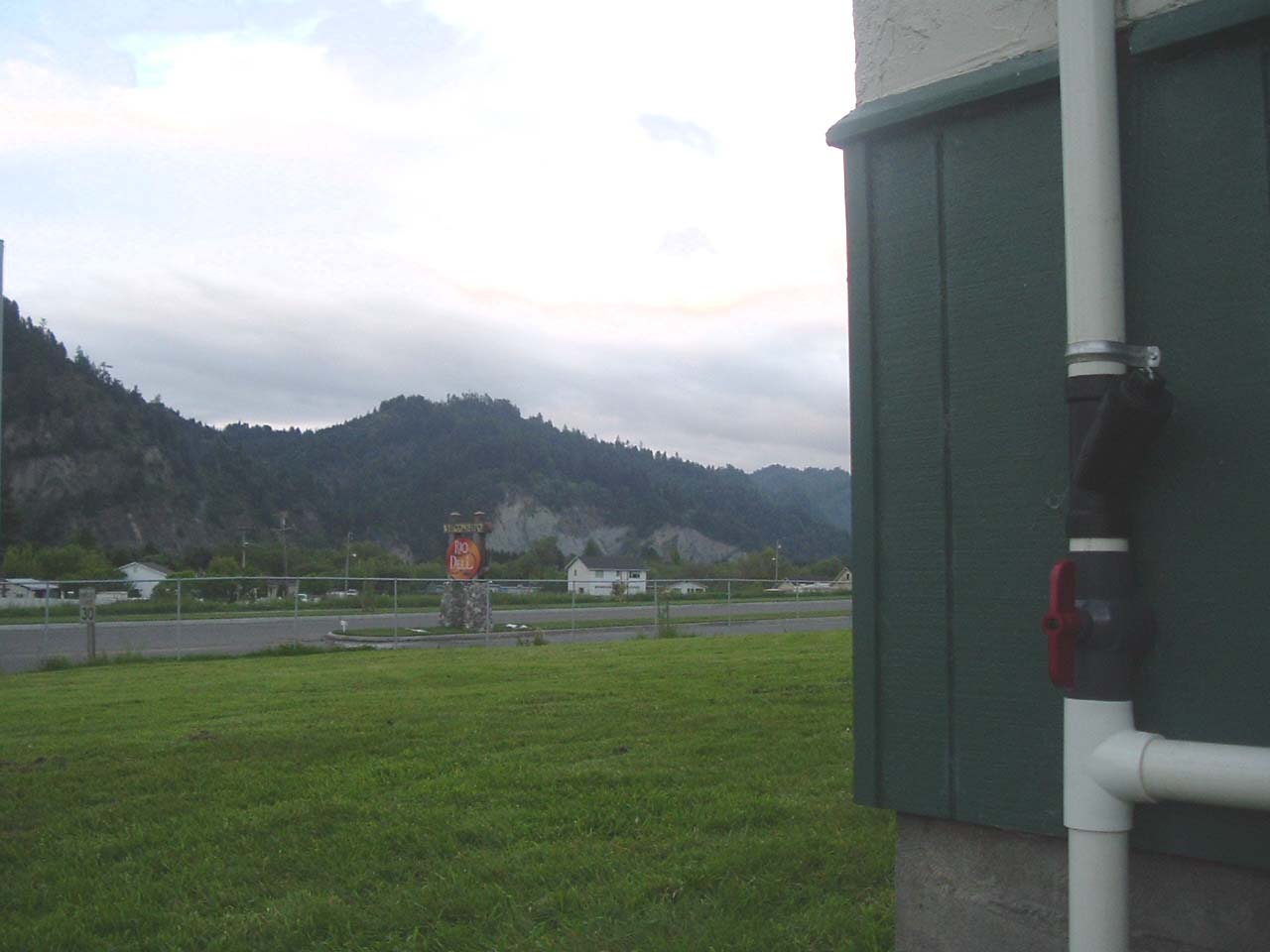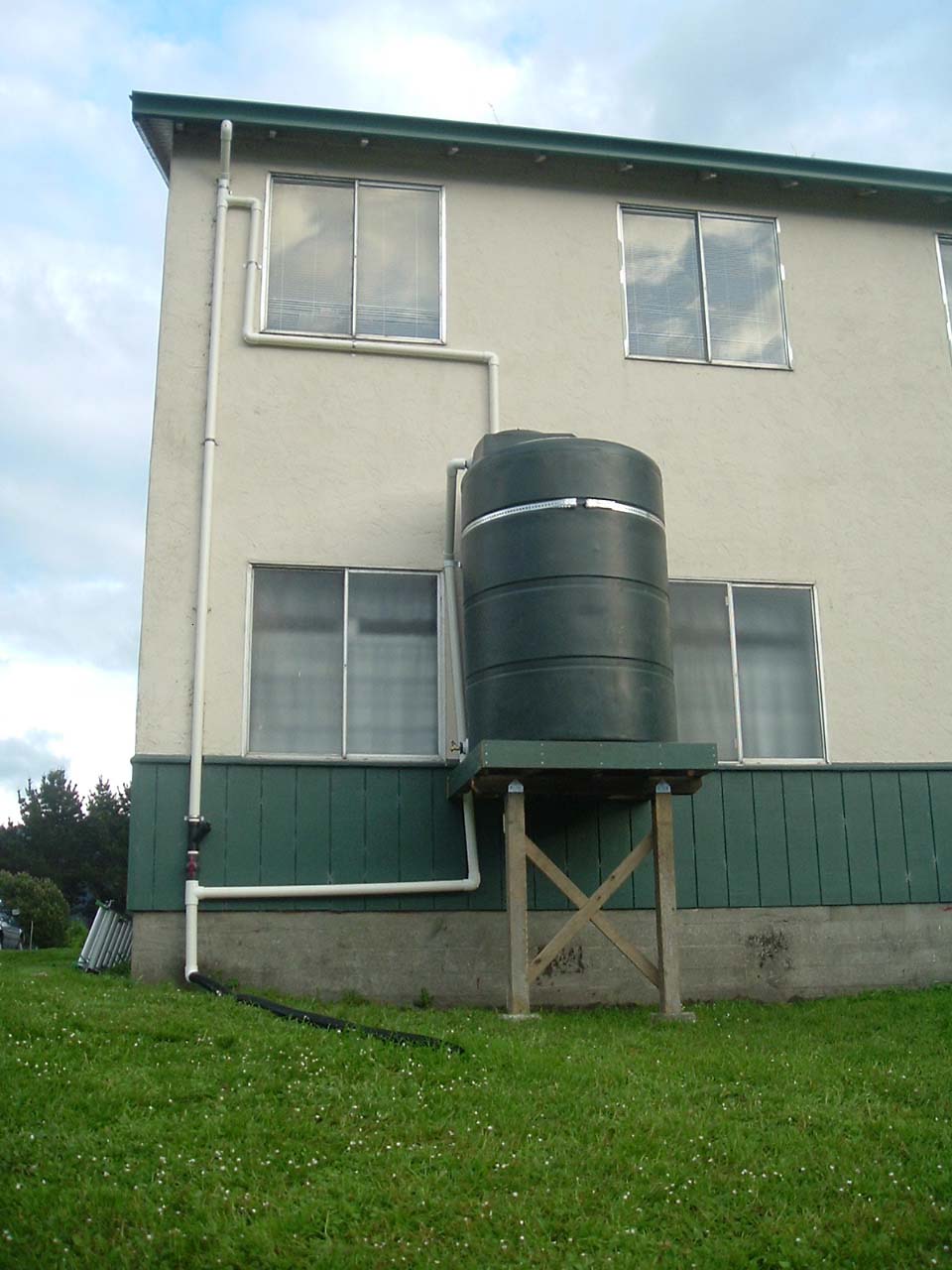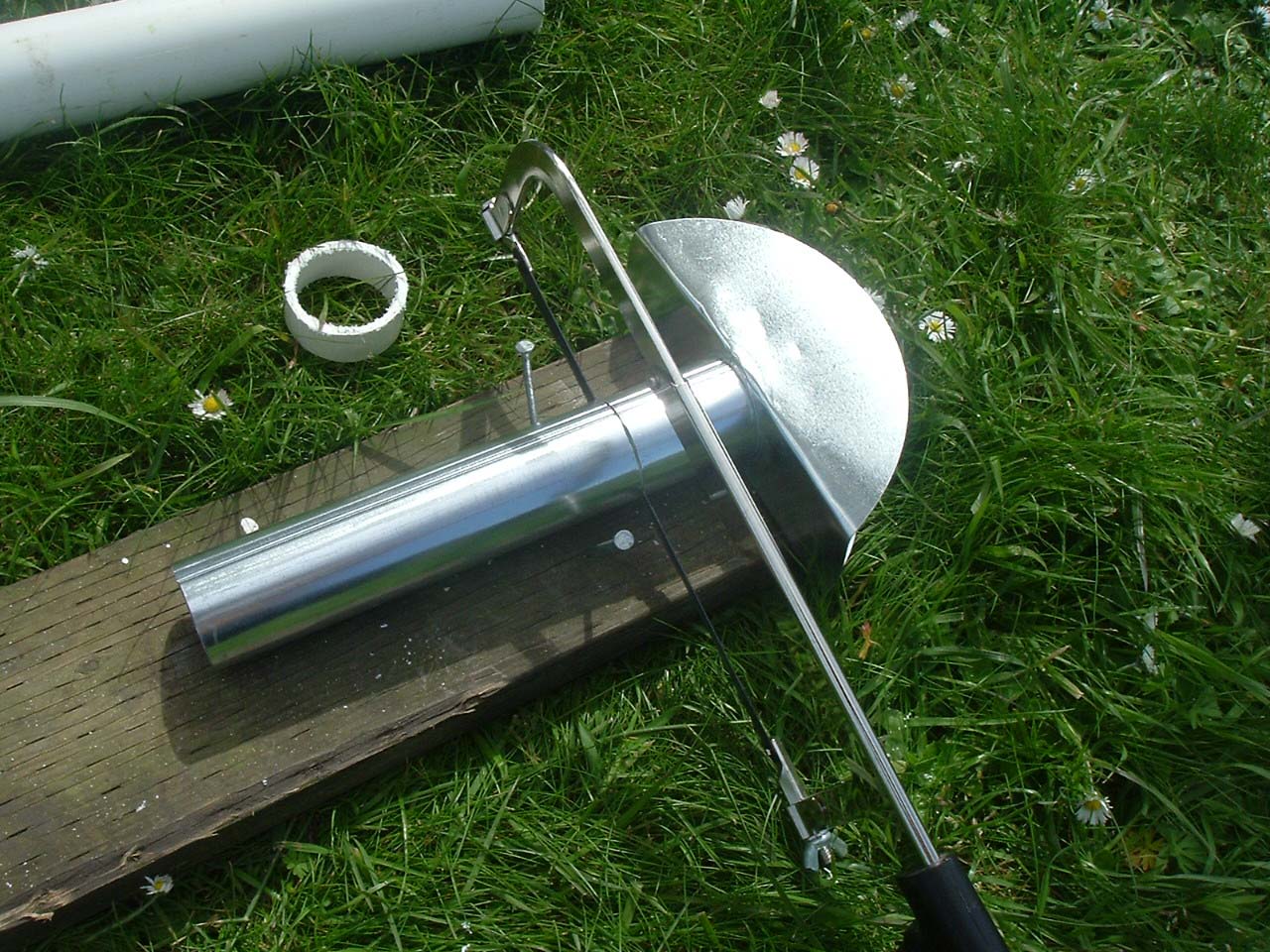 |
The
debris screen was formed from a typical downspout scupper -a fitting
that passes through the gutter and into the downspout. It was then
covered with wire mesh and sealed into the gutter with roofing tar. |
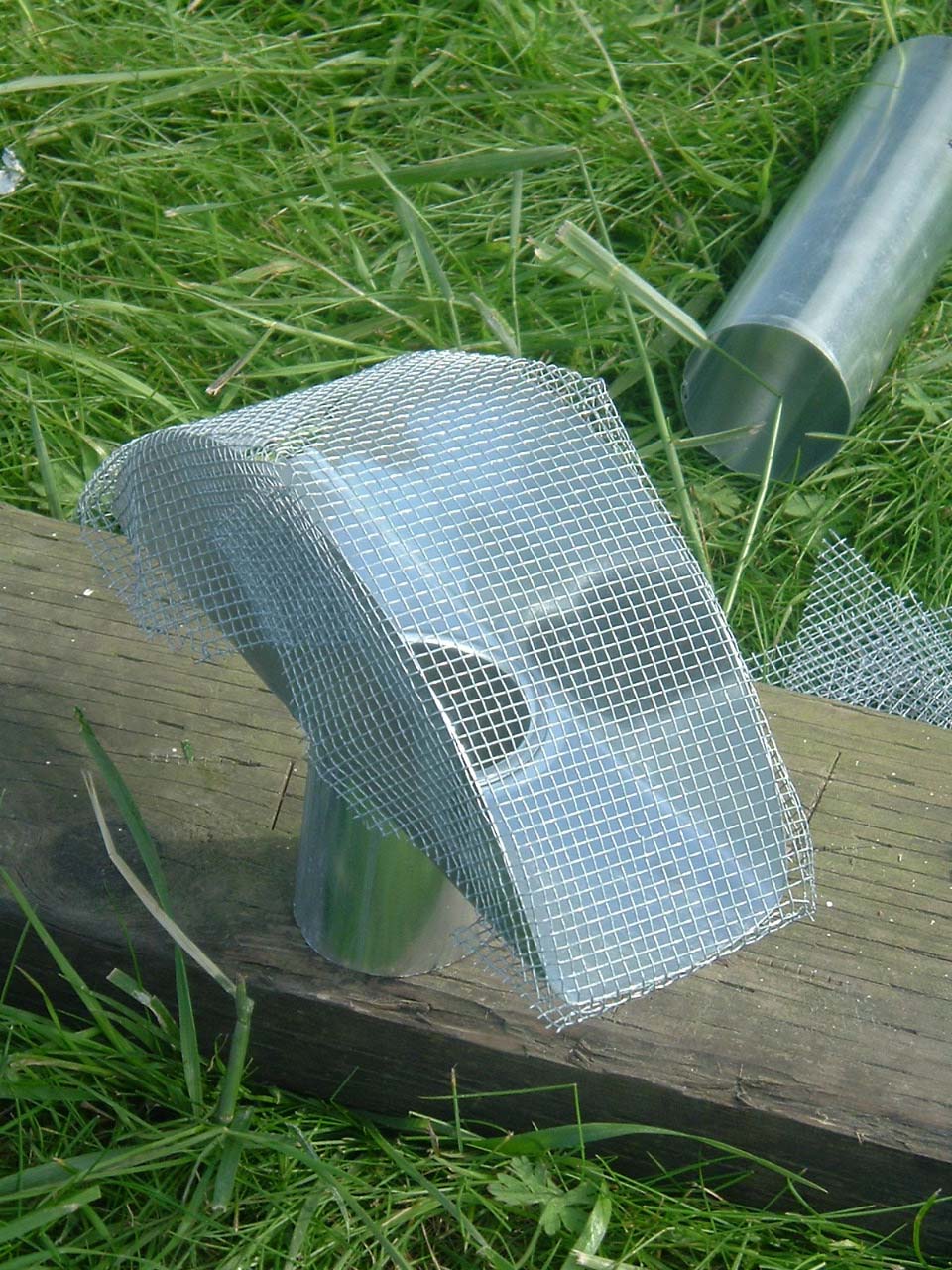 |
| |
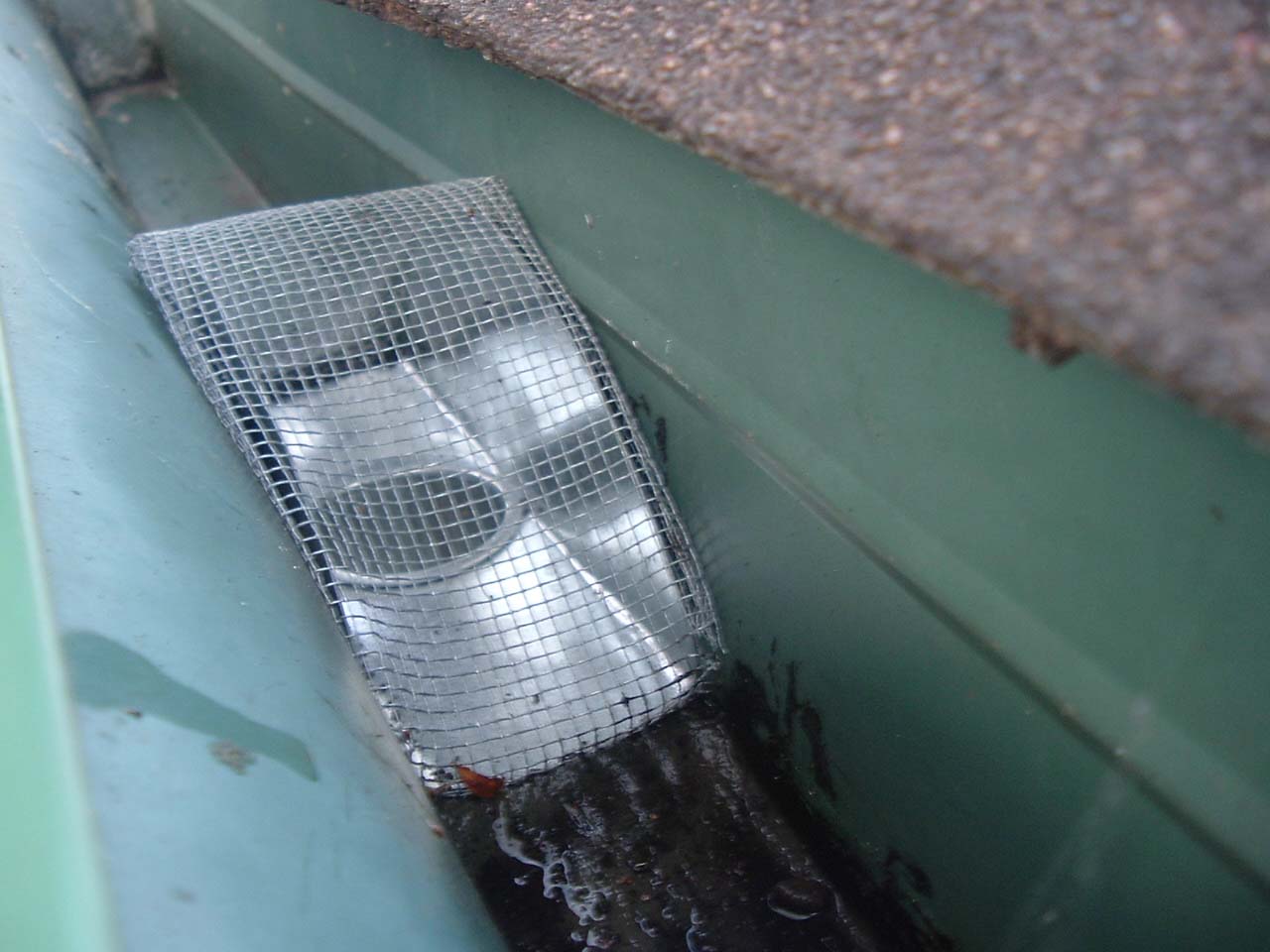 |
|
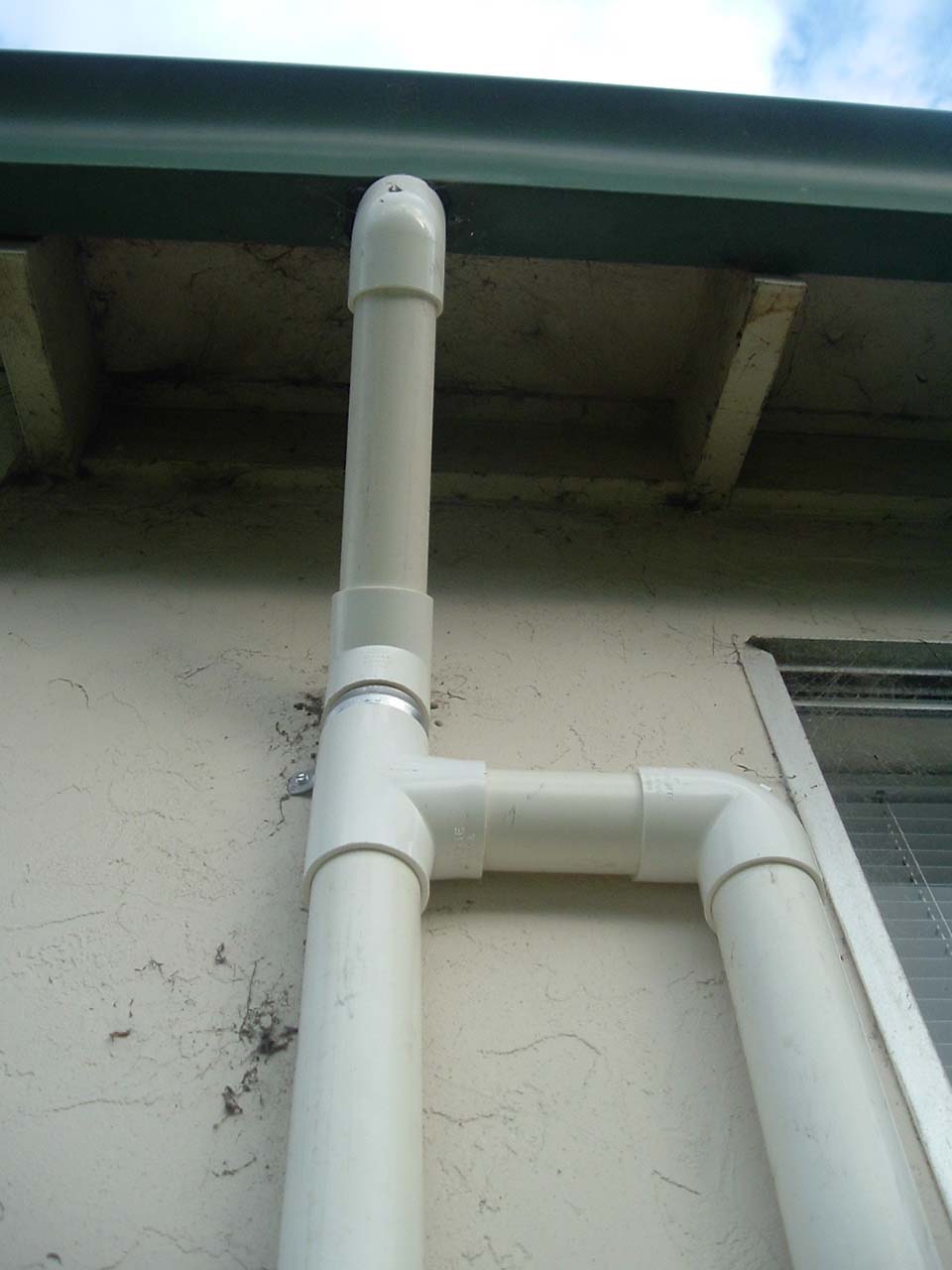 |
The
entire downspout was constructed from 2" PVC piping. Pipes were
connected using 45° elbows, 90° elbows, and T's, and then sealed with
PVC pipe cement. |
 |
| Above:
This T junction is where rainwater is diverted to the storage tank. The
diversion happens after the initial rainwater from the gutter passes
through the downspout and is backed-up at the ball valve below. (the
pre-wash) |
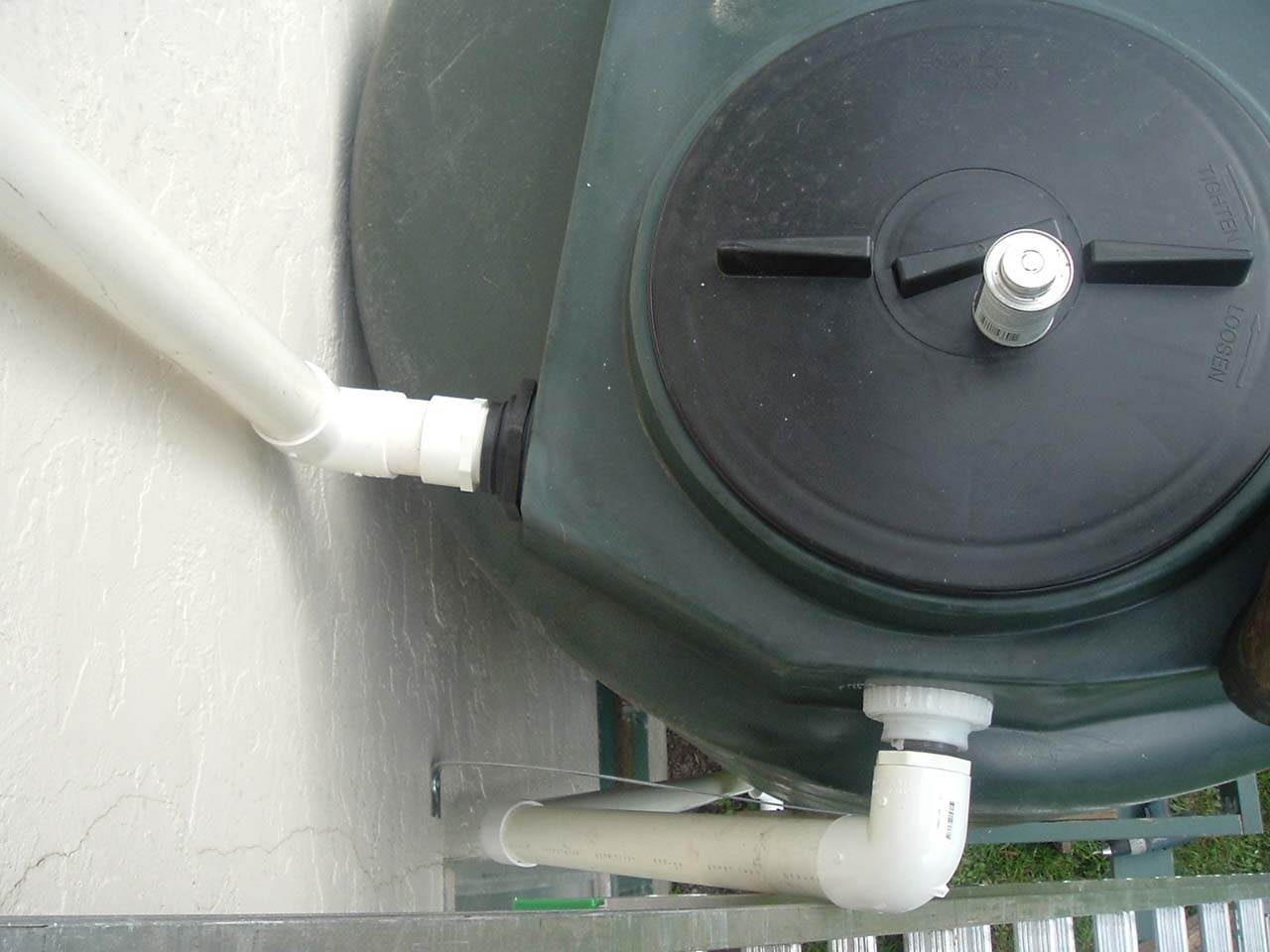 |
Left:
Diverted rainwater heads into the tank through the intake. When the
tank is filled, excess water is sent back to the downspout via the
overflow. |
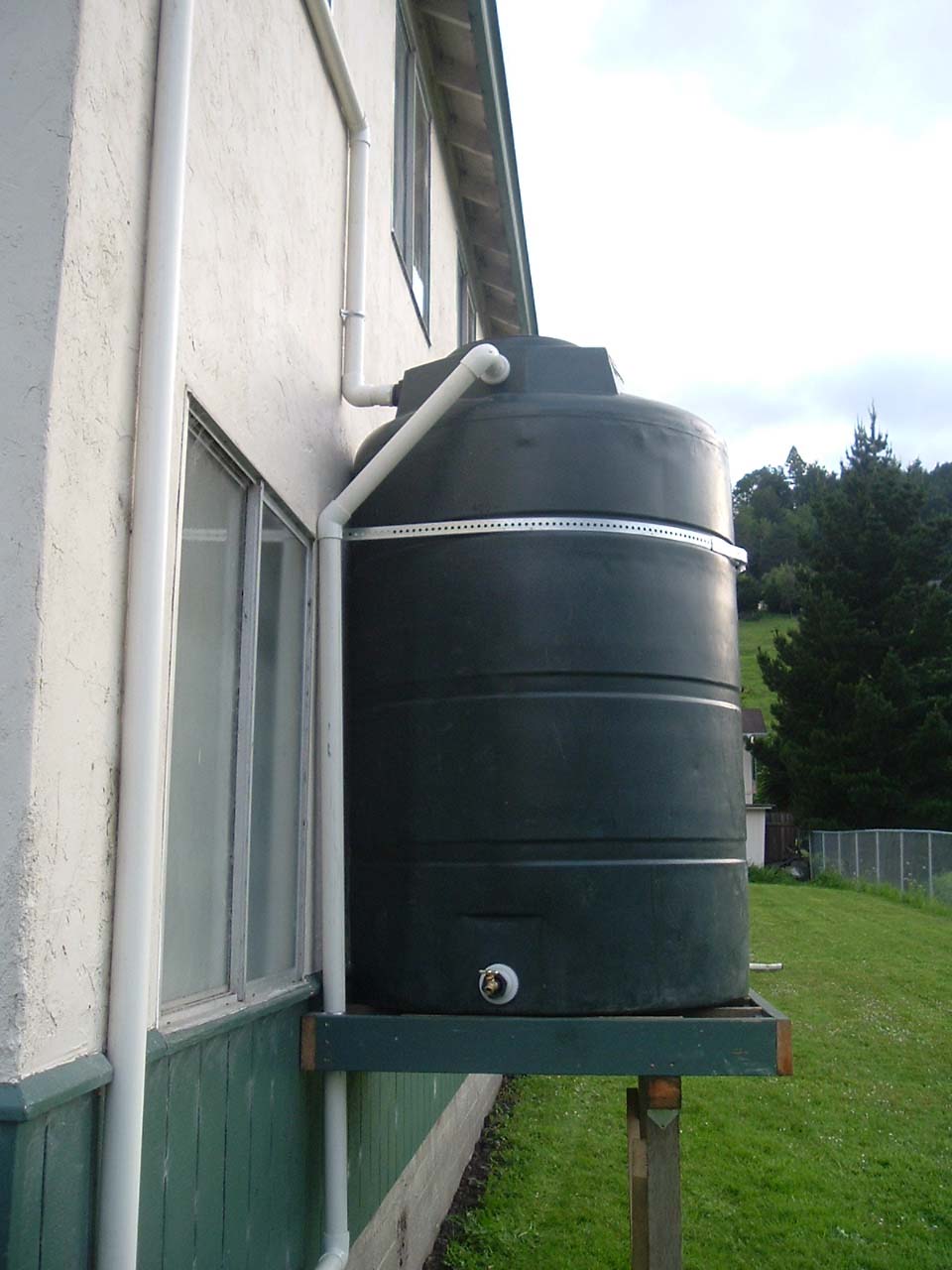 |
Right:
The ball valve, when half closed, allows for the capture and release of
the initial rainwater. As rainwater enters the system it is backed-up
at the ball valve, allowing for the pre-wash. As water backs-up to the
T junction above, it is diverted to the tank. At the rainstorms end,
leftover water in the downspout slowly escapes through the ball valve.
Since the ball valve is a spot for potential clogging, a clean-out
valve was installed above it. |
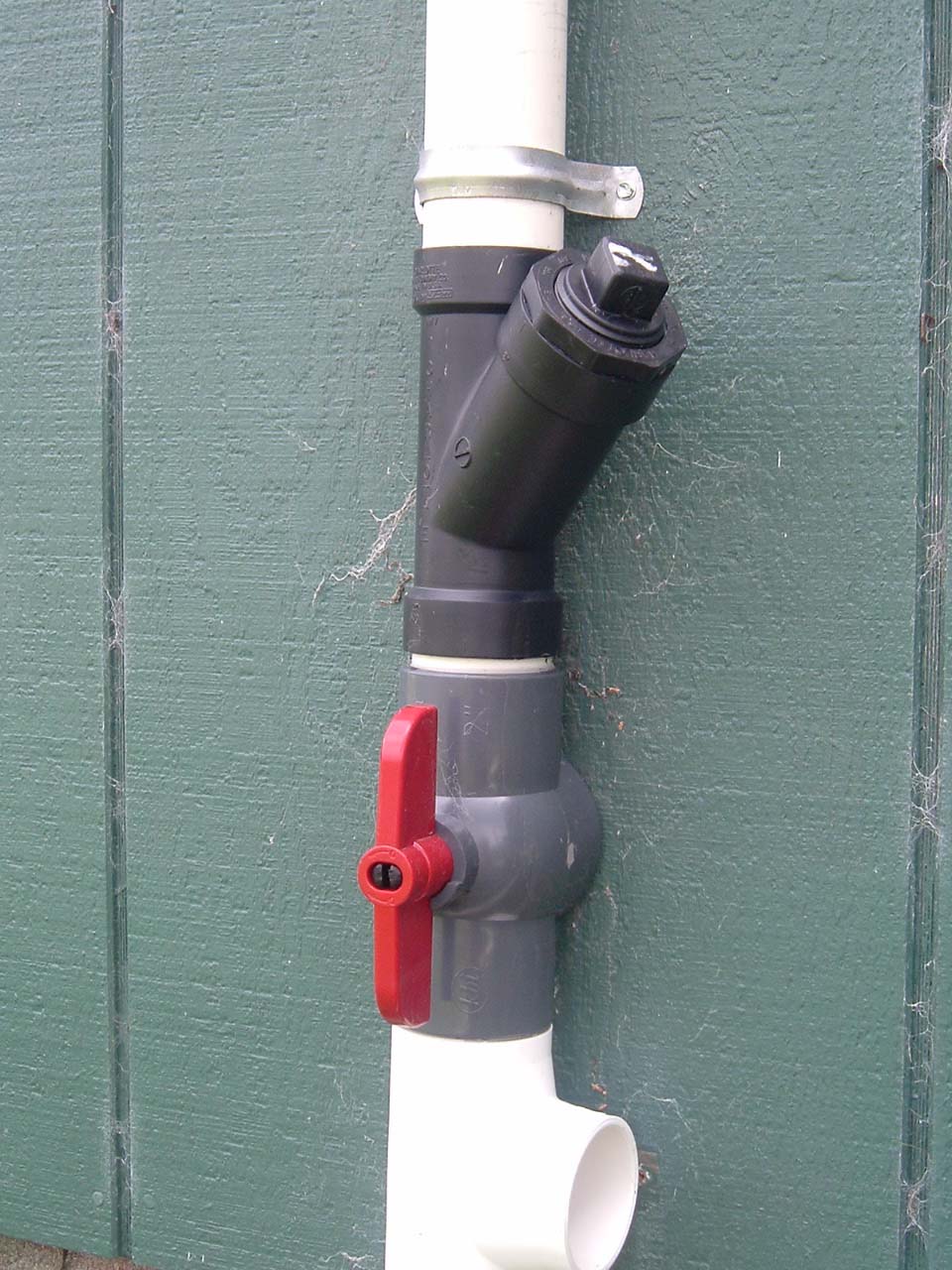 |
| As
the tank reaches its capacity, water is sent through the overflow and
back to the downspout. It joins the downspout just below the ball
valve, where both the overflow water and the escaping pre-wash water
are sent away from the building. |
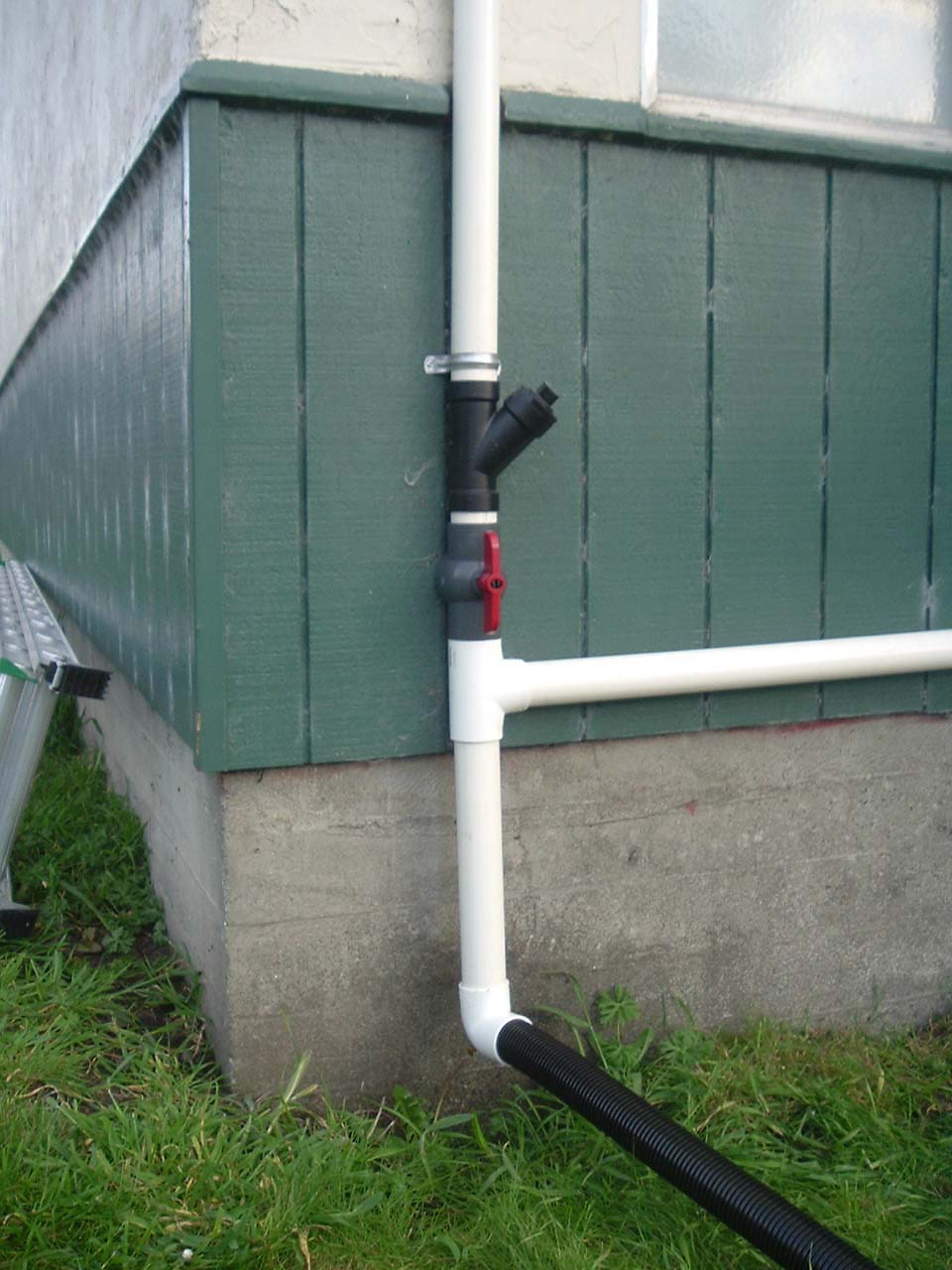 |
|
